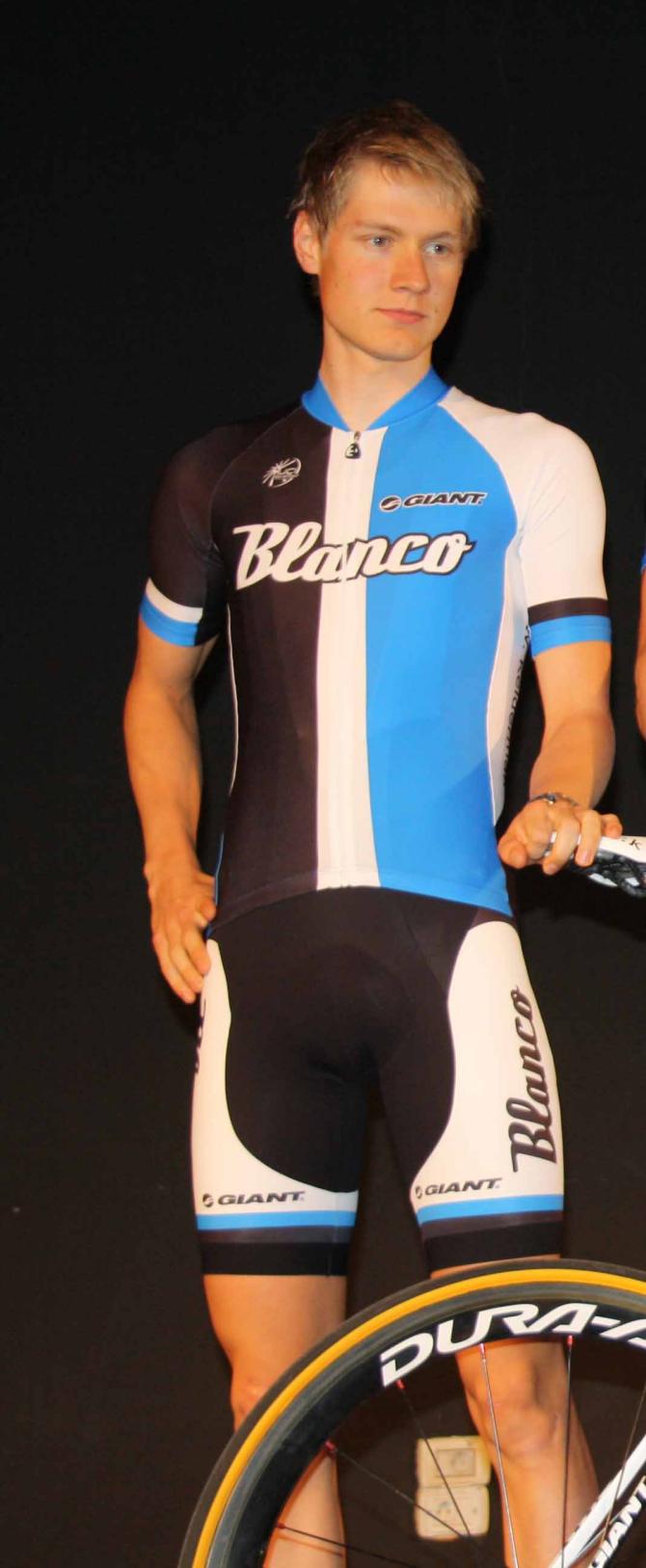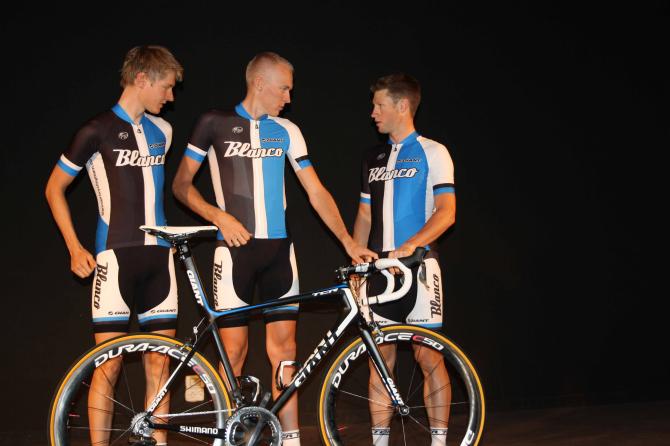Kelderman looking forward to Giro d'Italia challenge
Dutchman embarks on second year at WorldTour level


It is indicative of Wilco Kelderman’s standing at Blanco Pro Cycling that he was one of just three riders asked to model to the team’s new kit for the press at the squad’s low-key presentation in Fuerteventura shortly before Christmas. Still only 21 years of age, Kelderman has copious reserves of that most beguiling of commodities, potential, and as such he was perhaps a natural fit to stand alongside Robert Gesink and Mark Renshaw to sell the prospects of a team that is searching for a sponsor to ensure its future beyond the end of 2013.
In his debut season at WorldTour level in 2012, however, Kelderman also demonstrated his ample capabilities in the here and now, taking top 10 places and the best young rider’s jersey at both the Tour of California and the Critérium du Dauphiné during a fine purple patch in early summer. The Dutch youngster will now aim to continue that progress in 2013 and he is pencilled in for a Grand Tour debut at the Giro d’Italia.
“I’m partly going there for experience but also to be part of a good team,” Kelderman told Cyclingnews, explaining that while he will ride primarily in support of Gesink and Steven Kruijiswijk in Italy, he is also harbouring some ambitions of his own.
“I hope to ride the Giro for the white jersey but it’s hard to say now when I don’t know who else is riding there. The most important thing is to ride for bigger riders on my team but if it’s possible, I’ll go for the white jersey too. I saw the route of the Giro and I think it’s good for me with the time trials.”
A product of the famed Rabobank Continental stable (whose formal links with the WorldTour set-up have dissolved in the wake of the bank’s recent withdrawal from sponsorship at professional level), Kelderman is one of a number of young Dutch climbers at Blanco, although unlike many of his peers, he is also more than proficient against the watch.
“My time trial is pretty OK but climbing is something I need to improve for the big tours, although I’m still young and I can improve in steps,” Kelderman said. “As for my climbing style, well, I prefer the puncheurs like Contador, but I’m not really a rider like that myself. I’m more of a rider who goes at one tempo in the mountains, like Wiggins.”
Hailing from the flat hinterland of Amersfoort in the central Netherlands, Kelderman had precious little opportunity to test himself in the big climbs before he encountered the Ballon d’Alsace in his first year out of the junior category, even if his slight physique meant that he already expected to develop into a climber.
Get The Leadout Newsletter
The latest race content, interviews, features, reviews and expert buying guides, direct to your inbox!
“When you see my body, I was hoping I would be good on the climbs but it’s not just about your weight,” he said. “I won the Tour of Alsace and that was the big sign for me that I could be a climber. Ok, it’s not high mountains, the Ballon d’Alsace is only 1000 metres, but it’s still really hard and it was very encouraging.”
In fact, it was a question of physique that first prompted Kelderman’s move into cycling. A speed skater in his adolescence, the 12-year-old Kelderman became frustrated when he found himself unable to compete with faster growing rivals, and he opted to follow his brother into the local cycling club.
“The other guys, who I normally used to beat, were all growing and getting stronger than me, so I left speed skating and went to cycling,” he laughed. “I liked the game, I liked the way you could play with other riders by attacking. I wasn’t so good in the beginning as I was still a small guy but I started getting good results when I was about 16, and I kept getting better from there.”
Dauphiné
Once in the orange and blue of Rabobank, Kelderman was fast-tracked through the under 23 ranks and joined the WorldTour squad last season, where once again, the pace of his progress out-stripped expectations. His fourth place in the Dauphiné’s long time trial to Bourg-en-Bresse, ahead of Chris Froome and Cadel Evans, was perhaps the stand-out display, one which led to an eighth place finish overall three days later.
“The Dauphiné was a bit of a surprise for me: the time trial was really very good and then in the mountains, I was OK,” he admitted shyly. The consistent nature of Sky’s tempo in the climbs suited the natural cadences of Kelderman’s own climbing style, even if he pointed out that appearances could be deceptive: “It was good for me that they rode at one, steady tempo but like everyone, I was still suffering on their wheels.”
One of the principal lessons Kelderman drew from his maiden WorldTour campaign was to respect each race at the highest level. After his display at the Dauphiné, he might have expected to cruise through the lower-profile Tour of Poland, but instead the July event turned into something of an ordeal for the youngster.
“The level in WorldTour races is so high that every team has a few riders who can go in the top ten,” he said. “In Poland, it was hard to get the form from the Dauphiné and maybe I was a little tired too, and that was when you see what a high level a race like Poland is too.”
Perhaps with that in mind, the opening half of Kelderman’s 2013 season is built around three WorldTour races, with ample recovery time between them – the Tour Down Under, Paris-Nice and the Giro. “I want to get better every season and ride top 10 in Paris-Nice like I did at the Dauphiné last year, but it’s going to be really hard,” he said.

Barry Ryan was Head of Features at Cyclingnews. He has covered professional cycling since 2010, reporting from the Tour de France, Giro d’Italia and events from Argentina to Japan. His writing has appeared in The Independent, Procycling and Cycling Plus. He is the author of The Ascent: Sean Kelly, Stephen Roche and the Rise of Irish Cycling’s Golden Generation, published by Gill Books.